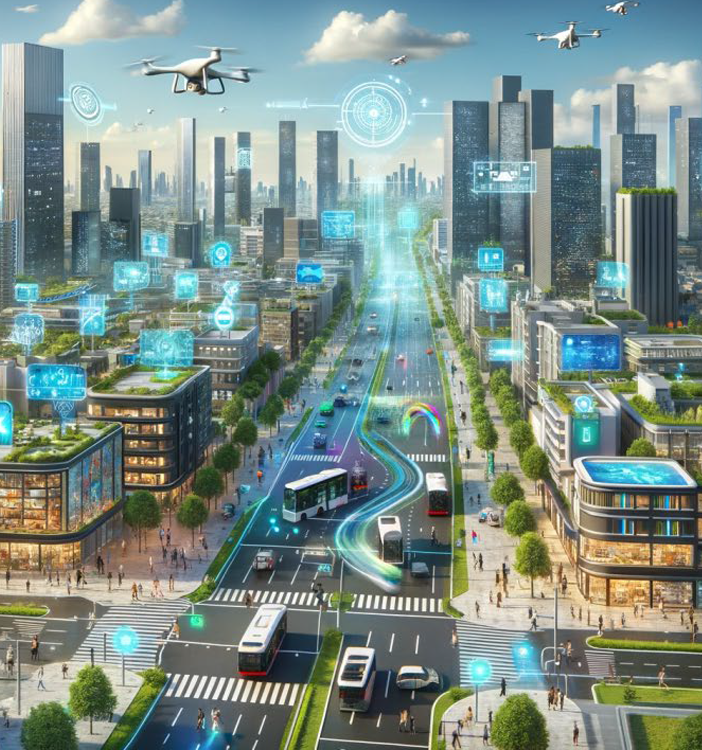Singapore
The Republic of Singapore has announced its quest to become the first smart nation. A program launched by Prime Minister Lee Hsien Loong in late 2014 calls for an unspecified number of sensors and cameras to be deployed across the island to track everything from cleanliness to traffic. In any case, the number of sensors being installed across the island will be large. Already, the city can detect if people are smoking in unauthorized zones or if people are throwing litter out of high-rise buildings. But substantially more data is coming, according to the Wall Street Journal, which announced in a recent headline that “Singapore Is Taking the ‘Smart City’ to a Whole New Level.”.

The city-state has implemented various initiatives, including:
- Smart Nation Initiative: Aims to transform Singapore into a connected city with smart homes, autonomous vehicles, and digital health services.
- Virtual Singapore: A digital twin of the city that allows for real-time data analysis and urban planning.
The city-state also has high smartphone penetration and scores well regarding in broadband availability. The company Singtel recently announced that it was rolling out a 10-Gbps fiber broadband service that would enable residents to download a two-hour HD movie in 90 seconds. “The network is one of the cheapest in the world based on the cost of broadband per unit of currency,” Sorrell says.
Barcelona, Spain
The chic capital of Catalonia region in northeastern Spain, Barcelona has made extensive use of sensors to help monitor and manage traffic. City planners recently announced their plan to remodel the flow, which they say will be reduced by 21%. The city is doing more than using smart-city technology to reduce traffic. It has installed smart parking technology as well as smart streetlights, and sensors for monitoring air quality and noise. It is also expanding a network of free Wi-Fi in public spaces. In Juniper Research’s recent roundup, Barcelona fell a rung from the leading spot it had past year. Still, the research agency praised the city’s environmentally sustainable projects, which it said was measurably better than either New York City’s or London’s.
Barcelona has integrated smart city technologies to improve urban living:
- Smart Lighting: Streetlights equipped with sensors adjust brightness based on pedestrian activity, saving energy.
- Waste Management: Smart bins notify sanitation workers when they need to be emptied, optimizing collection routes.
“Barcelona’s strength is in its sustainable energy—smart grid pilot projects, smart meters, and its comprehensive plan for reducing carbon emissions,” Sorrell says. “On top of that, it is rolling out smart LED lighting.”
The city has also made its Sentilo sensor and actuator platform available on the Internet. The open-source software platform can be found on Github. The availability enables city planners around the world to study data from Barcelona’s smart city projects and learn from them.
San Francisco, US
That the City by the Bay is one of the first cities in North America to adopt smart city technology is only fitting: the recent tech boom has made SF the unofficial capital of Silicon Valley. As CNN declared last year, San Francisco is now a hipper spot for startups than cities like Palo Alto, Mountain View, or San Jose. San Francisco’s Connected City initiative enables residents to locate parking spots. The city is also forward-thinking in its sustainability and smart urban development initiatives. It also has one of the highest densities of LEED-certified buildings in the United States.
The recent tech boom, however, has choked traffic in the city. Mayor Ed Lee is confident that the city can overcome the problem and transform SF into a national model for “smart transportation.” On a related note, the city is vying for a $40 million prize from the U.S. Department of Transportation. City officials are collaborating with researchers at UC Berkeley in the national competition.
Oslo leverages technology to address urban challenges:
- Smart Transportation: Advanced train systems and traffic management reduce congestion.
- Disaster Management: Real-time monitoring systems provide early warnings and coordinated responses to natural disasters.
The city, however, has been a leader in terms of smart parking. The SF Park initiative, which was launched in 2011, leverages sensors to monitor parking spaces. “The idea is that not only can you assess the level of occupancy for parking, which helps the cities manage new parking initiatives,” Sorrell says. San Francisco city officials use the data for dynamic parking system that adjusts the cost of parking based on whether spots are occupied or are vacant. “They might say that there is low occupancy in one area and then try to lower the price of it,” Sorrell explains.



